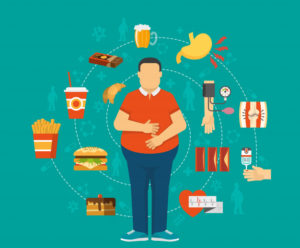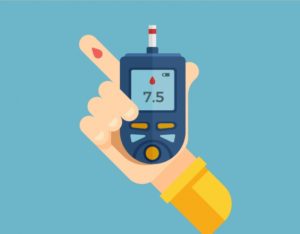
As the world moves faster by the day and competition is soaring high in every field of work, we might often find ourselves growing a little more stressed and a little more anxious with each passing day. With a never-ending work schedule and unrealistic deadlines, individuals have now begun to put in extra hours of work which is not only taking a toll on their mental health, but also on their physical well-being.
With a competitive world like the one we live in today, keeping up with deadlines and managing day-to-day stress has now begun to seem next to impossible for many. Juggling between work and personal life is now harder than ever.
Fitness and a Sedentary Lifestyle

With the thin line between professional and personal life fading fast enough, a lack of physical exercise and excess consumption of junk food is leading to health problems for many.
With extremely erratic work schedules, keeping track of the food and calorie intake has become next to impossible for individuals.
Furthermore, habits such as working till late in the night and waking up in the wee hours of the morning to get work done on time are leading to a sleep deficit in a number of people today.
Chronic Sleep Deprivation
Chronic sleep deprivation has been shown to affect overall health, performance at work, and safety. The unending stresses of daily life are a major reason individuals fail to get a good night’s rest.
Sleep deprivation or lack of sleep has been shown to decrease the quality of life, affect socializing, impair memory and decrease overall performance and mental awareness.
With sleep problems on the rise, many individuals are now finding it hard to keep up with the never-ending demands of their job.
Obesity
Obesity is and has been a growing problem for some time now, courtesy of an increase in fast food chains, over-exhausting work hours, and dangerously low activity levels.
Time and again, research has shown a number of health dangers associated with a sedentary lifestyle and obesity.
 These include, but are not limited to, various heart diseases, diabetes, high blood pressure, and fertility problems in women. While health problems are not guaranteed, obesity sure increases the risks. Excessive weight gain can also lead to a rise in blood pressure leading to possible blood clots, strokes and heart attacks. The risk of obesity can be reduced by decreasing salt intake, lowering fat consumption, and implementing a diet rich in fruits and vegetables. A few studies also indicate that as many as 40% of cancers are linked to obesity and high-fat diets.
These include, but are not limited to, various heart diseases, diabetes, high blood pressure, and fertility problems in women. While health problems are not guaranteed, obesity sure increases the risks. Excessive weight gain can also lead to a rise in blood pressure leading to possible blood clots, strokes and heart attacks. The risk of obesity can be reduced by decreasing salt intake, lowering fat consumption, and implementing a diet rich in fruits and vegetables. A few studies also indicate that as many as 40% of cancers are linked to obesity and high-fat diets.
Diabetes
Over the last two decades, the global scale has seen an increase in diabetes. While there are two types of diabetes, a majority of the individuals are seen suffering from Type 2 diabetes.
Diabetes causes the body to completely stop producing insulin, or the insulin produced by the body fails to work effectively.
This means that the body cannot break down the glucose from the food we consume effectively, causing it to remain unprocessed in the blood leading to high sugar levels.

Type 2 diabetes is linked strongly to obesity and a sedentary lifestyle. Since technology and long working hours have taken over the world, Type 2 diabetes has consistently been on the rise. Other risk factors would be genetic inheritance and in some cases, ethnic origin.
Excessive consumption of sweet foods and sweet dishes leads to obesity which in turn increases the risks of Type 2 diabetes and a number of other health problems, too.
An increase in sedentary lifestyle is now causing diabetes to affect the younger generation as well.
Some of the symptoms of undiagnosed diabetes would include lethargy, blurred vision and tiredness. Sadly, research has suggested that almost four out of five individuals suffering from diabetes die prematurely from heart disease.
While the problem itself is complicated, it can be detected by a simple blood test.
Blood Pressure
The heart is the strongest muscle in the body. Its job is to pump blood to all parts of the body. Oxygen-rich blood is pumped from the heart to all the organs of the body.
Impure blood is then carried back to the heart to get oxygenated understand bumped back out again.
As the blood passes through the arteries, the force it exerts on the arterial walls is called blood pressure. Systolic blood pressure is the pressure in the blood vessels when the heart is pumping blood out.
Diastolic pressure is the pressure in the blood vessels when blood is traveling to the heart again. The heart goes from contracting to releasing every time the blood is pushed out into circulation.
High blood pressure can lead to an increase in heart attacks and strokes that can eventually shorten the lifespan.
A blood pressure reading of 120 by 80 is considered normal range, however, these figures might slightly differ from from individual to individual.
The blood pressure of an individual tends to fluctuate throughout the day. An increase in activity will lead to an increase in blood pressure.
After a good night’s rest, we will notice the blood pressure fall back to normal again. These fluctuations are considered very normal. An increase in blood pressure due to an increase in activity or stress levels is a normal response of the body.
It is also temporary. It is only in a case where the blood pressure is constantly high that things might get alarming.
Blood Pressure should be kept in check on a regular basis and dietary changes must be made in order to help it stay within a normal range.
How To Start Exercising Even When You Wish You Didn’t Have To
Stated below are the health and fitness tips for all those who have sacrificed, or are on their way to sacrificing their health for long hours of work.
The workplace is where individuals now spend most of their time, so practicing wellness at work on a regular basis seems like the only practical solution for all their dilemmas. Slow and steady change is what one should be aiming at.
The idea is to set a schedule and then stick to it. Deciding to dedicate a certain amount of time to physical activity will help the body get accustomed to movement.
• Decide to dedicate a minimum of 20 minutes each day to movement.
• Once the body gets used to going 20 minutes,try to amp up the level of exercise or increase the resistance within those 20 minutes.
• Once you find yourself being able to workout for a continuous 20 minutes with little or no effort, try to increase the time period from 20 to 25-30 minutes and so on.
The idea here is to help the mind and body understand the benefits of physical exercise which are not only limited to weight loss.
Physical activity has an umpteen number of benefits, including boosting mood and reducing stress levels, helping the body to relax. What we must keep in mind though, is that the results are not instant. Everything good takes time.
But once the body starts getting accustomed to the routine, results will begin to show automatically. So not getting discouraged is an important aspect of beginning a new routine.
Workplace Workouts
With health and fitness awareness now doing the rounds, we tend to constantly hear about how one should introduce some form of physical activity for at least 30 to 40 minutes daily. But not many are able to spare the time to do so.
Perhaps, some prefer to spend their spare time doing indulging in other activities rather than care for their health.
Either way, now would be a good time to address the situation and all the stress that has been accumulated over a period of time as it does nothing but take a toll on our relationships, appearance, and most of all, our mental health.

Individuals working from morning to night might find their bodies feeling stiff after a long day’s work. All one feels like doing after a hard day at work is get home at the earliest possible and get into bed. But what one needs to realize is that our bodies need more than just that to keep illnesses at bay.
Yes, overworking your body has its own set of cons. But in an expensive and fast-paced world like the one we live in today, compromising on work hours seems next to impossible. But what we can do instead, is try and squeeze in a small amount of physical activity wherever possible.
This might include walking to the station before boarding the train, parking the car a few blocks away from the workplace and walking the distance, taking the stairs, and skipping fast food for healthier options instead.
Taking a two-minute break every 45 minutes to stroll around while working will also add to the little effort.
And most importantly, remember that adding a bit of physical activity to your day does not give you a free pass to binge on unhealthy foods consisting of nothing but empty calories and poor nutrition.
 It is important to remember that if you are exhausted, unfit, or have been ill in the past, all you might be able, to begin with, is 5 to 10 minutes of physical activity a day. But that is absolutely fine, too, as long as you can make an effort to do it.
It is important to remember that if you are exhausted, unfit, or have been ill in the past, all you might be able, to begin with, is 5 to 10 minutes of physical activity a day. But that is absolutely fine, too, as long as you can make an effort to do it.
Try increasing the level of activity a little more each week. And remember, exercise is not a competition. Every individual’s body is different.
This means that everyone has a different level of endurance which can be improved over time. Well-being, healthy eating, and fitness is not a fad nor is it “dieting”.
It is a way of life, and so, as individuals living a fast-paced life, we must make conscious efforts to devote a small amount of time to health, fitness, and well-being for without health – freedom, and money are all worthless!
Do not miss a single article!
Submit your email id to get new articles directly into your email inbox!
- Employee Wellness Programs: They Really Work! - October 21, 2022
- Yoga Teacher Training Standards - November 18, 2021
- Why You Will Never Go Hungry Again - October 25, 2021



